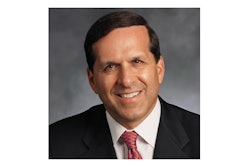Case presentation is one of the most important systems in the dental practice. Systems are the backbone of the practice and determine which practices become the most successful. Most practices are positioned to do extremely well, but even successful practices need to update or replace systems on a periodic basis.
One of the key systems is case presentation, which is often overlooked, because it involves more than checklists and scripts. Case presentation is an art and a science, but it is well worth the effort to learn both aspects, as high case acceptance rates result in higher production and profit for a practice.
 Dr. Roger P. Levin.
Dr. Roger P. Levin.
Currently, case presentation is one of the most ignored and overlooked systems in a dental practice. In fact, one general dentist we recently met mentioned that he had never thought of case acceptance as a system at all and that it was “something he just did.” That highlights the problem. Most dentists do not think much about case acceptance as a system or how to improve it. They simply (almost robotically) present cases the same way over and over to patients.
One reason dentists have been lulled into this approach is that the vast majority of case presentations are focused on a single tooth. The case acceptance on single tooth treatment is relatively high, which leads practices to ignore focusing on how to improve wider case acceptance. But once a case begins to exceed $1,500 in fees, even with dental insurance, case acceptance rates drop off.
Dentists have a phenomenal opportunity to increase case acceptance on larger cases. Many dentists do not even diagnose the larger cases, only dealing with the most obvious and immediate patient concerns. High-end practices focus on comprehensive diagnosis, including potential elective services, and excel at educating, motivating, and exciting patients about treatment. Their case acceptance on larger cases is much higher than the average practice.
How to improve case acceptance
You always want to improve your practice systems, including case presentation. If the numbers are not improving continually, then there is work to be done. And some of that work is relatively simple once you start to think of case presentation as a system with a step-by-step approach.
The approach could look like this:
- Have the assistant or whoever brings the patient to the consult room display a positive, excited personality. Positive personalities are contagious, put patients in a good mood, and create a better environment for patients to think about accepting treatment.
- The dentist should always enter the room calm and collected. Take a moment before entering, take a breath, know who’s in the room, and know what you’re presenting. Confidence is an enormous factor in case presentation. Even a confident dentist who rushes into a room still thinking about the last patient in another room as they walk through the door comes across as less confident, more scattered, and less believable.
- The dentist must also display an extremely positive, upbeat, and energized personality. You want to look like you are excited to be with them. Once again, positivity is contagious and creates a high-energy environment with a greater chance a case acceptance. Simply ask yourself, “Who would I buy something from: the dull, fatigued, tired dentist or the one who is excited about what is being presented and explaining it in my best interest?"
- Learn one new thing about each patient. Before jumping into a case presentation, start with a personal question. This creates and strengthens relationships and makes you more likable. It also makes you more trustworthy, a very significant factor in the decision to accept treatment.
- Sit at eye level with the patient, lean forward, and smile. Sitting at eye level makes the patient equal to you. Leaning forward creates positive energy, and smiling says you like them. Body language is a significant part of communication and has a dramatic effect on how patients perceive you.
- Explain the case presentation in steps. Some dentists even number each step as they go. “The first thing we will do is …, the second thing we will do is …, the third thing we will do is …” By presenting a case in this manner, patients find it easier to follow. They also understand the flow of the case presentation, how multiple-tooth treatment can build on itself, and they are more able to comprehend what is being explained.
- After presenting the case, take time to ask questions. If the patient doesn’t ask a question, you might ask a question that is very common and answer it for the patient. Help patients get comfortable with the case. It is also important to never interrupt a patient, because people get comfortable by having a conversation about a potential purchase. When you interrupt them, you shut down that entire process.
- Let the patient know they can afford treatment. Simply explaining that you have multiple financial options, including patient financing, is one of the most powerful messages you can give. You want patients to think about which option they will accept, not whether they can afford treatment.
- Ask the patient “the magic question.” “Mrs. Jones, would you like to do this?“ It is a commitment question, and you are giving the patient a chance to think. Answer any additional questions that the patient may have. This is one of the most important aspects because so many dentists never ask for commitment. You will be amazed how many patients will accept treatment when asked this question.
The above steps of case presentation are the top line. The time and effort to improve case presentation will create one of the most powerful systems in your practice to increase production, profit, and income.
Dr. Roger P. Levin is CEO of Levin Group, a leading practice management and marketing consulting firm. To contact him or to join the 40,000 dental professionals who receive his Practice Production Tip of the Day, visit LevinGroup.com or email [email protected].
The comments and observations expressed herein do not necessarily reflect the opinions of DrBicuspid.com, nor should they be construed as an endorsement or admonishment of any particular idea, vendor, or organization.



















